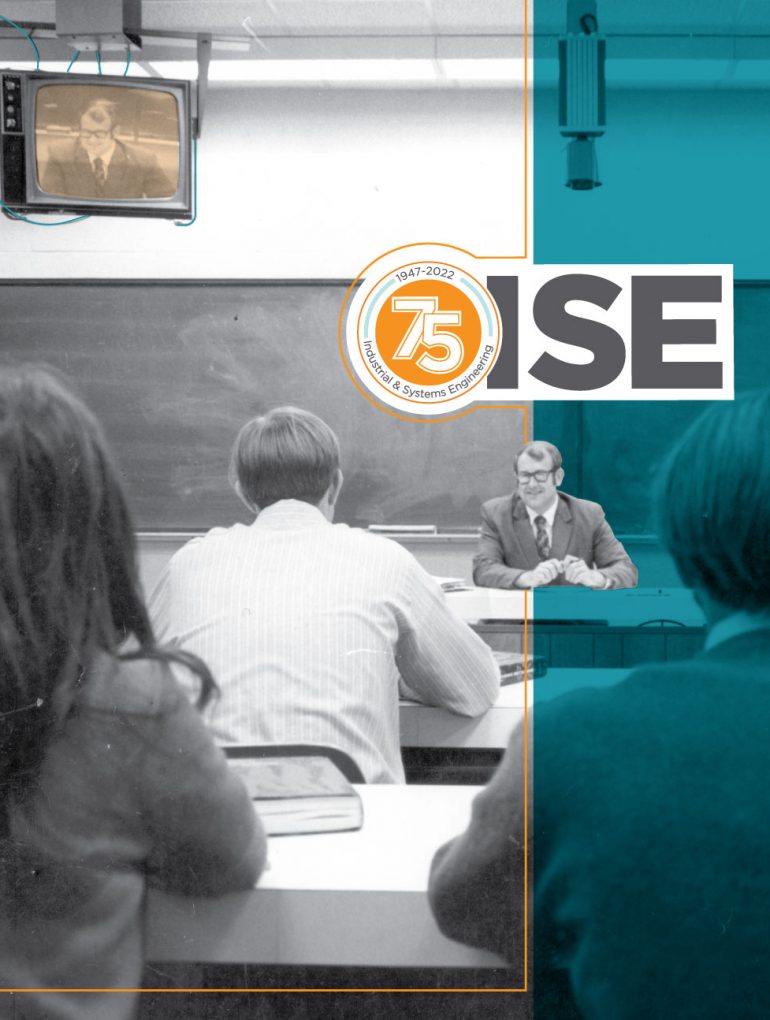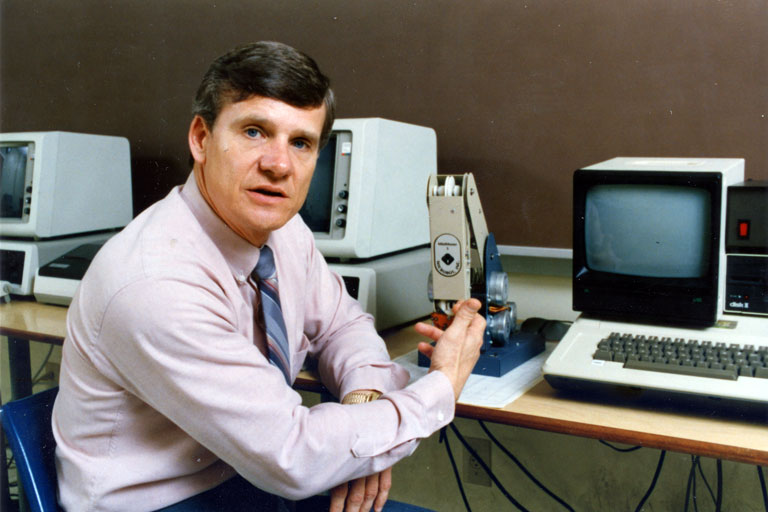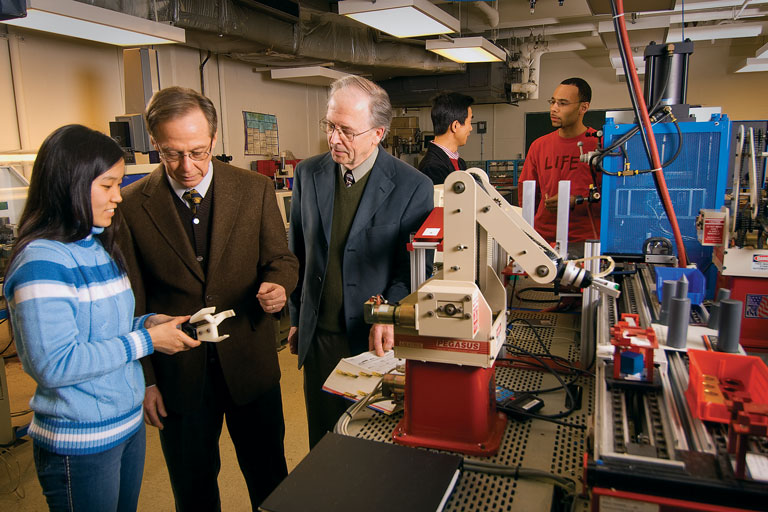By David Goddard.
What is now known as the Department of Industrial and Systems Engineering got its start just after World War II, in 1947.
Howard Emerson became its first department head the same year. He served in that role until 1968 and shaped much of what ISE has become at UT, including the recognition and accreditation of the program in 1950 and the establishment of its graduate programs in 1951.
The department has grown since then to include instruction and technology that would have been unimaginable when it began. Still, its commitment to prepare future engineers and to solve the problems facing businesses, industries, and organizations has remained steadfast.
We have revised our undergraduate curriculum with the twin threads of data analytics and practical skills. There is also a much greater emphasis on students doing internships and co-ops. We have one of the highest participation rates in the college.”
Kobza explained that instruction in data analytics focuses on better computer skills and use of quantitative tools while practical skills development emphasizes applications of industrial engineering tools, often with real-world projects and greater use of full-time faculty with industry experience.
Examples of the department’s impact on the outside world in recent years include helping to improve work design and implementing lean manufacturing ideas. Senior design projects have helped area powerhouses such as Clayton Homes, Fort Sanders Regional Medical Center, and Allison Boats, among others, bringing value to students’ educational experiences and helping fulfill UT’s mission to improve economic opportunities as the state’s flagship institution.
Other changes moving forward include a consolidation of department operations by moving the graduate engineering management program and associated faculty from the UT Space Institute in Tullahoma to Knoxville.
Plans also include revising the department’s master’s degree program—particularly the distance education option—to better meet the needs of working engineers.
So far, the momentum ISE has generated in recent years seems to be paying off.
“Enrollments, placement rates at graduation, and starting salaries for new graduates have all risen,” said Kobza. “We provide a framework and a Volunteer attitude that will help them walk into any position, provide value, and succeed.”
Kobza pointed out that ISE alumni run the gamut, from Fortune 500 CEOs to entrepreneurs with their own companies, from managers to elected officials and stay-at-home parents.
He said those successes highlight how well an ISE education translates across disciplines and interests and show the value of a degree from the department.
“Our graduates are key organization personnel across areas from manufacturing, health care, supply chain, nonprofits, and government,” Kobza said. “I hope alumni feel we are graduating students who will continue the legacy of leadership they have established. If not, I encourage them to let me know so we can improve the process.”
The focus on the future shows that, while the department has been successful for the past 75 years, those within it are working to make sure it stays that way for the next 75.






